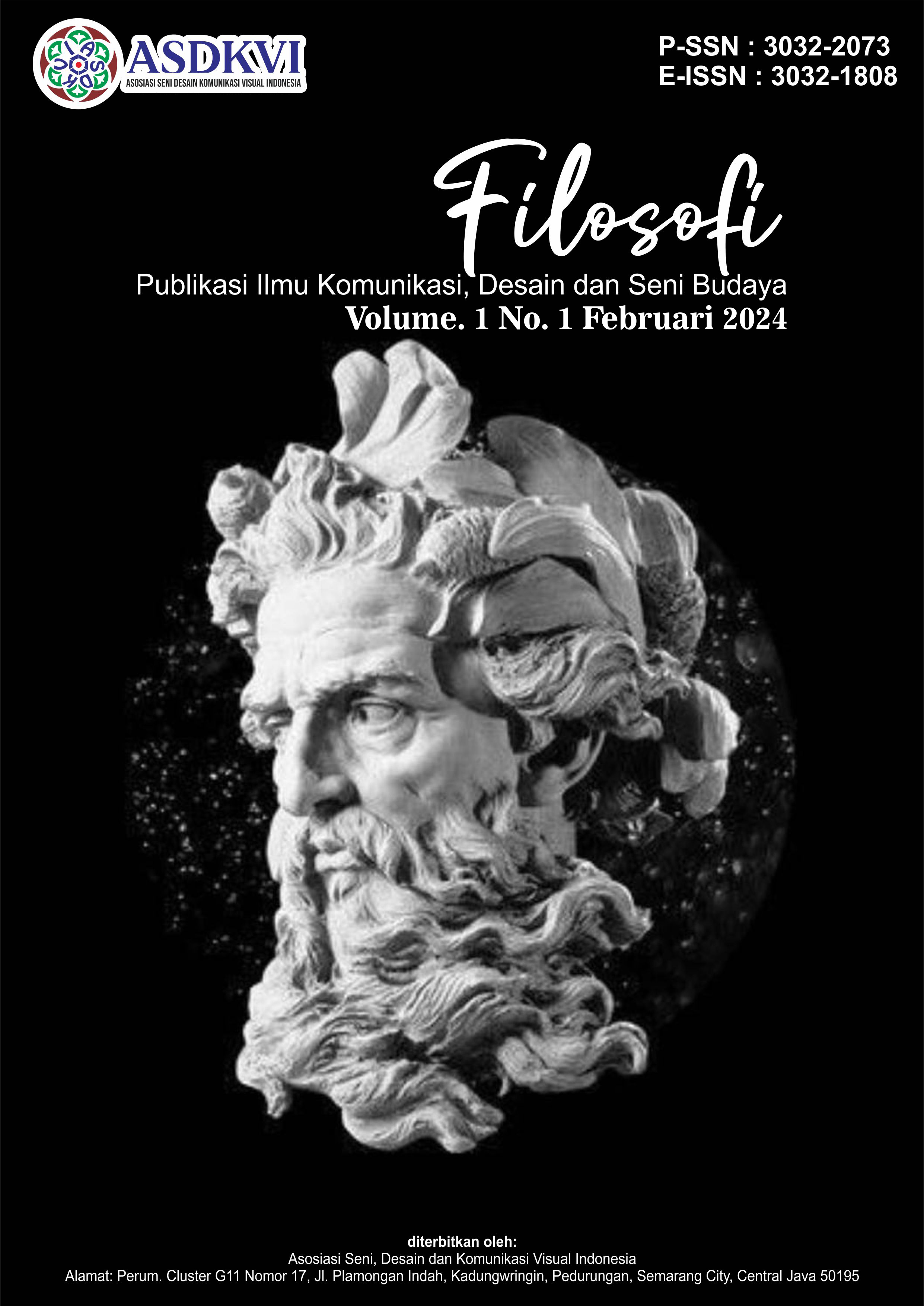Analisis Gerak Tor-Tor Naposo Nauli Bulung di Desa Muaratais II Kecamatan Angkola Muaratais Kabupaten Tapanuli Selatan
DOI:
https://doi.org/10.62383/filosofi.v1i1.79Keywords:
Tor-Tor Naposo Nauli BulungAbstract
The purpose of this study is to describe and analyze the Tor-tor Naposo Nauli Bulung dance in Muaratai II Village, Muaratais II Village, Angkola Muaratais District, South Tapanul Administrative Region from the point of view of space, time and energy. This type of research is qualitative research conducted using descriptive methods, the research instrument is the researcher himself and supports stationery, mobile phones and flash drives. This type of research uses primary data and secondary data. Data collection techniques are carried out through literature studies, observation, interviews and documentation. The stages of data analysis are data collection, data description, data analysis, and data inference. The aspect of the space for Tor-tor Naposo Nauli Bulung Dance is 7 types of motion that have elements of line, volume, facing direction, level, vision vokus. The dominant circular line, which is found in the motion of markusors, mangidos, manartcons ritoop, and singgang. Its volume consists of large and small. The dominant facing direction forward. The level of motion consists of high, medium, and low. As well as the focus of view focuses on the direction of the fingers. The aspect of time consists of 2 elements, namely: tempo and rhythm. The dominant tempo uses a slow tempo. The dominant rhythm is slow. There are 3 kinds of power aspects, namely: intensity, pressure, quality. The element of intensity predominates is weak intensity. This dance has no stress or accent because the movement flows gently following the code of the accompaniment music.
References
Alwi, Hasan dkk. (2007). Kamus Besar Bahasa Indonesia. Jakarta: Balai Pustaka
Desfiarni, 2021. Pelestarian Tari Ambek-Ambek Oleh Sanggar Timbulun Koto Basaga Di Nagari Koto Anau Kecamatan Lembang Jaya Kabupaten Solok. Skripsi. Padang : Universitas Negeri Padang
Desfiarni, D. (200 4). Tari Lukah Gilo: Sebagai rekaman Budaya Minangkabau Pra Islam: Dari Magis ke Seni Pertunjukan Sekuler (pp. 1-169). Kalika.
Indrayuda.(2013). Tari Sebagai Budaya dan Pengetahuan. Padang: UNP Press Padang.
Maulida, I., & Mansyur, H. (2020). Koreografi Tari Ratok Maik Katurun Di Nagari Padang Laweh Kecamatan Koto VII Kabupaten Sijunjung. Jurnal Sendratasik, 10(1), 211-218.
Moleong, Lexy J. (2014). Metodologi Penelitian Kualitatif. Edisi Revisi. Bandung: PT. Remaja Rosdakarya.
Meri, La. (1986). Elemen-elemen Dasar Komposisi Tari. Terjemahan Soedarsono. Yogyakarta: Logaligo.Yogyakarta.
Putraningsih, Titik. (2007). Diktat Mata Kuliah Analisis Tari. Yogyakarta: tidak diterbitkan.
Rukmini, Dewi Sulistyawati. (2023). Radap Rahayu Tarian Penghormatan Negara Dipa. Jawa Barat: CV Adanu Abimata
Sari, T. R., & Mansyur, H. (2020). Koreografi Tari Piring Hoyak Badarai Di Sanggar Sarai Sarumpun Di Kota Padang. Jurnal Sendratasik, 9(2), 10-16.
Setiawati, R. (2008). Seni Tari, Jakarta: Direktorat Jendral Manajemen Pendidikan Dasar Dan Menengah, Direktorat Pembinaan Sekolah Menengah Kejuruan, Departemen Pendidikan Nasiona
Soedarsono, (1986). Pengantar Pengetahuan dan Komposisi Tari. Jakarta:
DepDikBud.
Triagnesti, S., & Mansyur, H. (2021). Bentuk Penyajian Tari Pisau Dua Pada Acara Bimbang Adat Di Desa Sendawar Bengkulu. Jurnal Sendratasik, 10(3), 80-89.
Downloads
Published
How to Cite
Issue
Section
License
Copyright (c) 2023 Filosofi : Publikasi Ilmu Komunikasi, Desain, Seni Budaya

This work is licensed under a Creative Commons Attribution-ShareAlike 4.0 International License.





